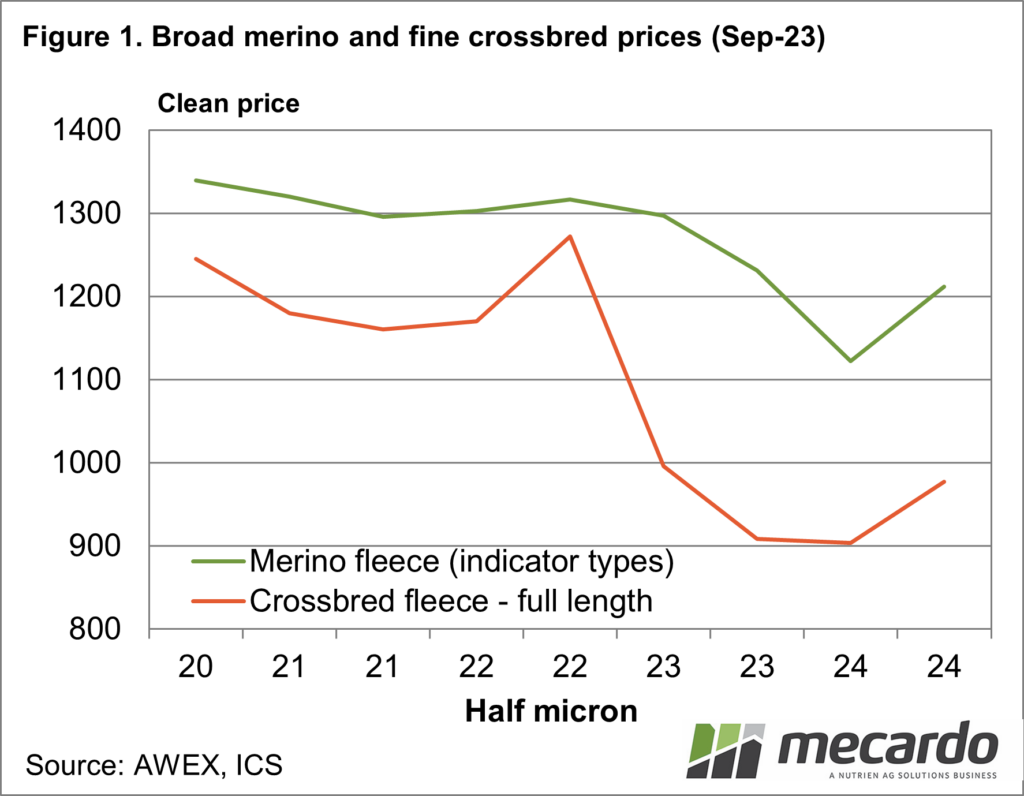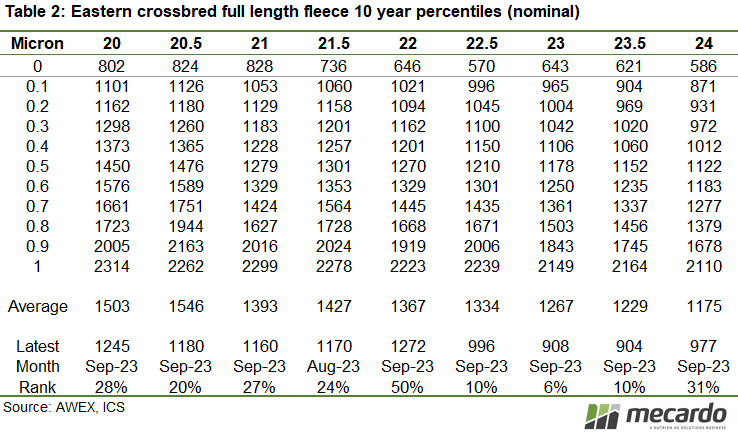With the decline in broader merino production from the early 1990s onwards and the focus of lamb producers on meat, the “in-between” micron categories have become hard to quote. This article takes a quick look at prices for the micron categories which are at the intersection of merino and crossbred wool.
A good example of how the structure of the Australian clip has changed in the past three decades is the 25-micron category. In the mid-1990s around 80-90% of 25-micron wool was merino. Now merino makes up between 1% and 3% of the 25-micron wool supply in Australia. The 23-micron category was 99% merino in the mid-1990s and is now 20-30% merino. On the other side, full-length crossbred fleece makes up only around 10% of 23-micron crossbred volumes. It is easy to see why AWEX has a difficult time generating indicators (MPGs) for the 23-25 micron categories.
Despite the small volumes offered in Australia, there are farmers, and in a wider sense ,regions outside of Australia, which produce wool falling into the 22-24 micron categories which might be broad merino or fine crossbred. Figure 1 shows September average prices (there are a couple of August ring-ins) for merino “indicator” style fleece and full-length crossbred fleece in half-micron increments from 20 to 24 microns. As a general rule crossbred fleece trades at around 90% of the value of merino fleece for 22 micron and finer. Broader than 22 micron the ratio seems to drop, on limited merino volumes. In September the average ratio has been around 80% for these broader categories (23-24 micron).
Tables 1 and 2 provide 10-year percentile (nominal) tables for the series shown in Figure 1, plus the latest price and its rank. At the fine end of the microns shown 20-22 micron, the recent merino and crossbred prices have similar ranks. As the micron pushes out beyond 22 micron, the merino ranks vary but hold at better levels than the crossbred price ranks which fall quickly to low levels.
The latest 22-micron quote in Table 2 shows how quotes with small volumes can be pushed around. Looking at the price (1272) which comes in at 97% of the corresponding Merino quote it seems the crossbred wool, perhaps viewed as a comeback type for which there is no place in AWEX ID, was priced at close to Merino levels.
What does it mean?
Price data is available for the merino and crossbred fleece categories in the fibre diameter categories where they overlap, but small volumes mean that prices can be quite volatile with crossbreds sometimes upgraded to near merino prices and merino sometimes dropped to the seconds and priced as crossbred.
Have any questions or comments?
Key Points
- Fine crossbred and broad merino fleece overlap in supply with crossbred generally trading at 80-90% of the merino value.
- Small volumes of each category make the development of regular quotes difficult.
Click on figure to expand
Click on figure to expand
Click on figure to expand
Data sources: AWEX, ICS, Mecardo















